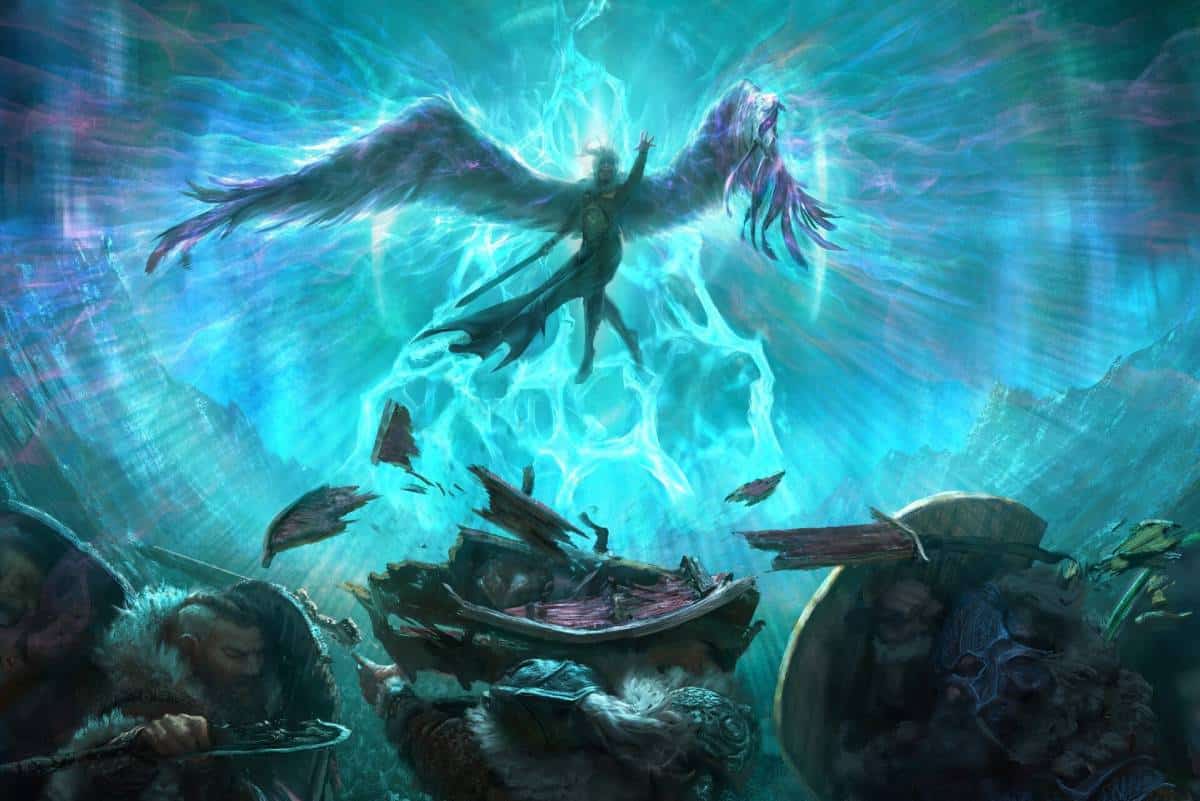Divinely Favored 5e
Published on December 28, 2023
Unleash divine power in D&D 5e with the Divinely Favored feat! Find the perfect spells and classes for your celestial-empowered might.

Campbell White - Wizards of the Coast - Invoke the Divine
What Is Divinely Favored 5e?
Divinely Favored is a feat introduced in Dragonlance: Shadow of the Dragon Queen. This setting has a prominent focus on character alignment and the god’s interaction with the world, and this feat reflects those themes.
Divinely Favored represents a god’s selection of the character to wield a fragment of divine power, granting them access to unique spells.
How Does Divinely Favored Work?
Upon taking this feat, your character learns one cleric cantrip and one 1st-level spell based on their alignment:
- Good alignment characters choose a 1st-level cleric spell
- Evil alignment characters choose a 1st-level warlock spell
- Neutral alignment characters choose a 1st-level druid spell
Additionally, characters gain the 2nd-level ritual spell augury.
They can also cast the chosen 1st-level spell and augury without using a spell slot, though this can only be done once per long rest. Alternatively, these spells can be cast using available spell slots. The spellcasting ability for these spells is chosen when you take the feat and can be Intelligence, Wisdom, or Charisma.
Lastly, the character can now use a holy symbol as a spellcasting focus for any spell cast using the chosen ability.
Is Divinely Favored Good?
In our 5e Feats Tier List, Divinely Favored was given a B Tier rating, making it a niche feat that can improve some builds in D&D 5e.
A cantrip, a 1st-level spell of your choice from your alignment’s spell list, and a 2nd-level ritual spell may seem like it’s providing more value than Magic Initiate, but in actuality, it’s a good deal less powerful.
While the cleric cantrip list is pretty strong and a 1st-level spell off the warlock, cleric, or druid spell list is going to be beneficial, most of the time, I’d rather have two cantrips of my choice than a cantrip and augury.
What Spells to Choose?
Cleric Cantrips:
- Guidance: Offers a consistent d4 bonus to ability checks to you or your party.
- Sacred Flame: Reliable damage cantrip that targets Dexterity and ignores cover.
- Toll the Dead: Potentially the strongest cantrip, if used against a damaged enemy.
Cleric 1st-Level Spells:
- Bless: Boosts attack rolls and saving throws for your party.
- Command: Varied spell that has a ton of uses.
- Guiding Bolt: Deals good radiant damage and grants advantage on the next attack against the target.
- Healing Word: A d4 heal that can be cast as a bonus action, perfect for reviving downed allies.
- Shield of Faith: Increases your or an ally’s AC.
Warlock 1st-Level Spells:
- Armor of Agathys: Provides temporary hit points and damages attackers, excellent for melee builds.
- Hellish Rebuke: A reaction spell that deals damage to your attacker when hit.
- Hex: Adds 1d6 necrotic damage to each hit and provides disadvantage on certain ability checks for the target, great for builds with multiple attacks.
Druid 1st-Level Spells:
- Absorb Elements: Reaction that offers resistance against elemental damage and boosts the next attack.
- Entangle: Controls the battlefield by restraining multiple enemies, great for crowd control.
- Healing Word: A d4 heal that can be cast as a bonus action, perfect for reviving downed allies.
- Thunderwave: Effective for dealing area damage and pushing enemies away, useful for creating space in combat.
Holy Symbol Focus
Getting access to the holy symbol focus is quite mechanically interesting. What’s really cool about this focus is you can bear this symbol on a shield or wear it visibly. This means that, even if your hands are full with a one-handed weapon and shield or two one-handed weapons, you can still cast spells requiring material and somatic components.
However, as Sage Advice states, you cannot cast a spell that requires somatic but not material components in this way.
This kind of only matters for martial spellcasters who will likely take War Caster anyway, so it definitely doesn’t matter too much.
